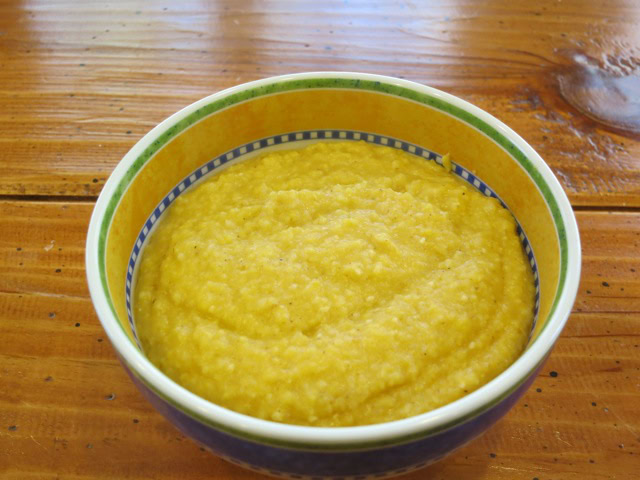The Power of Polenta
Karen Ansel, MS, RD
Karen is a nutrition consultant, recipe developer and author specializing in nutrition, health and wellness. She is the co-author of The Calendar Diet: A Month by Month Guide to Losing Weight While Living Your Life, Healthy in a Hurry: Simple Wholesome Recipes for Every Meal of the Day, and the IACP finalist The Baby & Toddler Cookbook: Fresh, Homemade Foods for a Healthy Start. She is also a frequent contributor to womens, health and cooking magazines such as Woman’s Day, Women’s Health, Prevention, Fitness and EatingWell. You can say hi to Karen on Twitter @KarenAnselRD or learn more about her by visiting her website.
Whole grains are one of the cornerstones of the Mediterranean diet. Packed with vitamins, minerals, antioxidants and fiber, they’ve been shown to help regulate blood sugar, balance blood pressure, reduce inflammation and also prevent heart disease and some kinds of cancer. Because they’re incredibly satisfying, they help you stay slim too. So as a registered dietitian and avid cook I’m always looking for new and different grains to use in my kitchen. One of my latest favorites is polenta. Frequently used in Northern Italian cooking, polenta is made from cornmeal. It’s a good source of fiber and is naturally slimming. Plus it’s a cinch to make. Simply boil it in water, stock or low-fat milk (stirring often) and it’s ready in 30 minutes or less. If you’re not in a hurry, an even easier way to make it is to bake it in a 350F oven for about an hour because you don’t have to stir it as often.
An important tip: if you want the benefits of whole grains, make your polenta from stoneground whole grain corn meal. Most products labeled Polenta are made with degerminated corn; only whole grain cornmeal still contains all of the bran, germ and endosperm in the kernel.
When you cook polenta, its grains sop up all the cooking liquid. So they expand a lot. That guarantees a generous, filling portion that’s low in calories. Just one-quarter cup of uncooked polenta swells up to one cup once it’s cooked. Not a bad bargain for only 130 calories. While it’s often served as a side dish polenta also makes an incredibly satisfying main dish too. And there are countless ways to prepare it: topped with a little tomato sauce and grated Parmesan, with grilled shrimp, or with sautéed vegetables or a mushroom ragout. It even works for breakfast with a drizzle of honey or maple syrup.
So it’s only natural that when I was developing the recipes for my latest book, The Calendar Diet: A Month by Month Guide to Losing Weight While Living Your Life, I’d include a polenta recipe. One of my favorite ways to make it is by cooking it in a combination of chicken broth and low-fat milk, a duo that makes it super creamy and provides an additional protein boost. Stirring in some nutrient-rich canned pumpkin adds extra fiber, vitamin A and beta-carotene. This dish is ideal for vegetarians and, if you use gluten free chicken broth, it’s gluten free too. Because you can make it from ingredients in your pantry it’s the perfect meal for a busy weeknight.
Pumpkin Polenta
Serves 2
Ingredients:
1 cups low-sodium chicken broth
1 cup non-fat milk
1 cup stoneground whole grain cornmeal
½ cup canned pureed pumpkin
½ teaspoon maple syrup
2 large pinches cinnamon
Pinch nutmeg
Pinch black pepper
3 tablespoons grated Parmesan cheese
Directions:
Bring chicken broth and milk to a boil in a medium saucepan.
Add polenta and stir well. Reduce heat to low. Simmer 20-25 minutes, until smooth and creamy, stirring frequently.
Stir in pumpkin, maple syrup, cinnamon, nutmeg and pepper. Cook 2 additional minutes.
Stir in Parmesan and serve.
Nutrition information per serving: 341 calories, 16g protein, 54g carbs, 6g fiber, 7g fat (3g sat)








Leave a comment